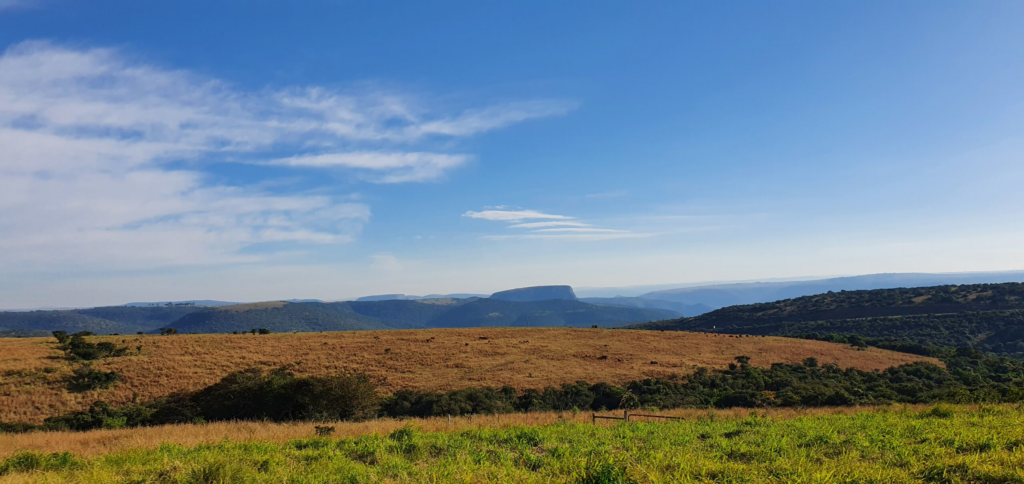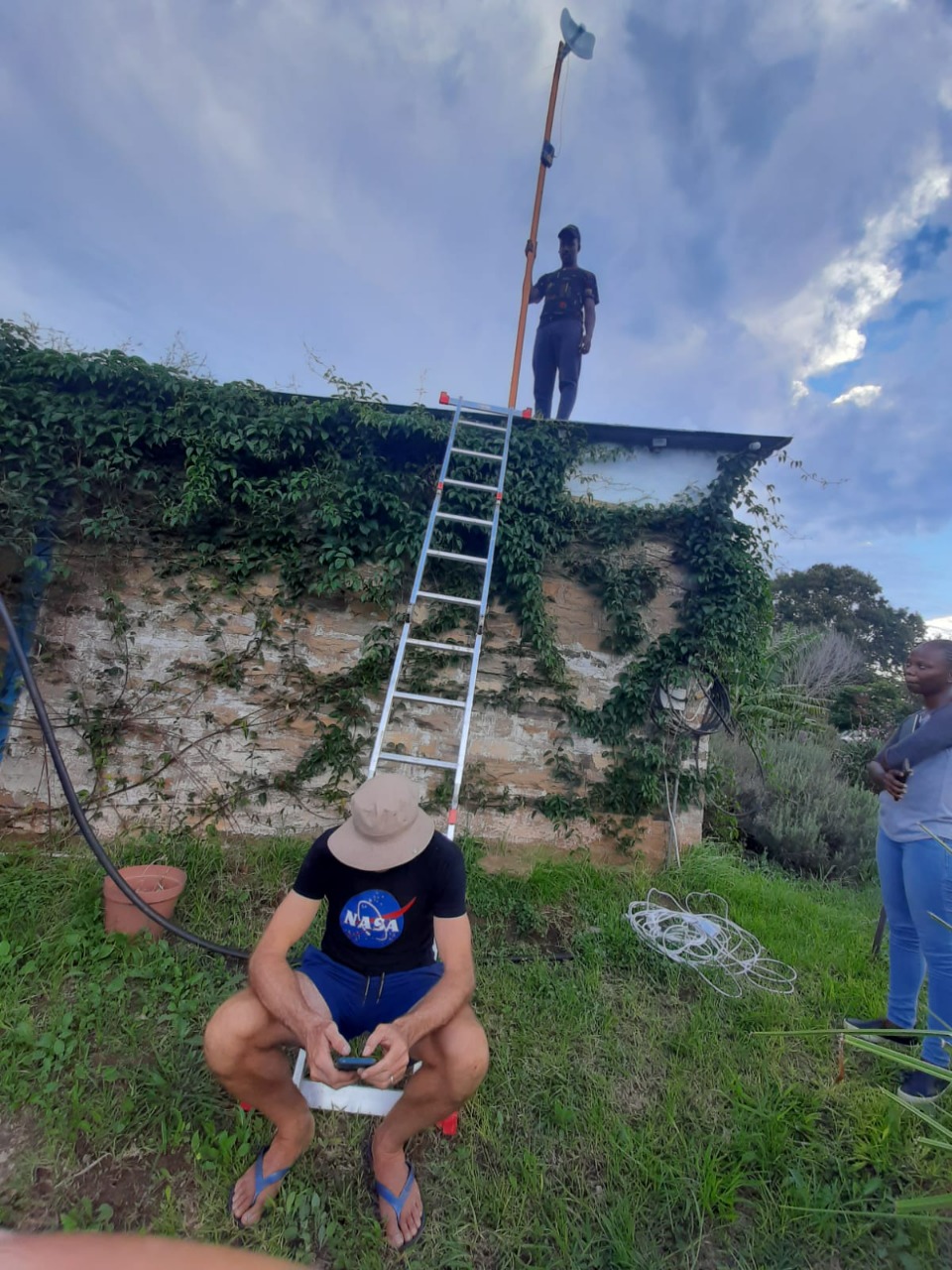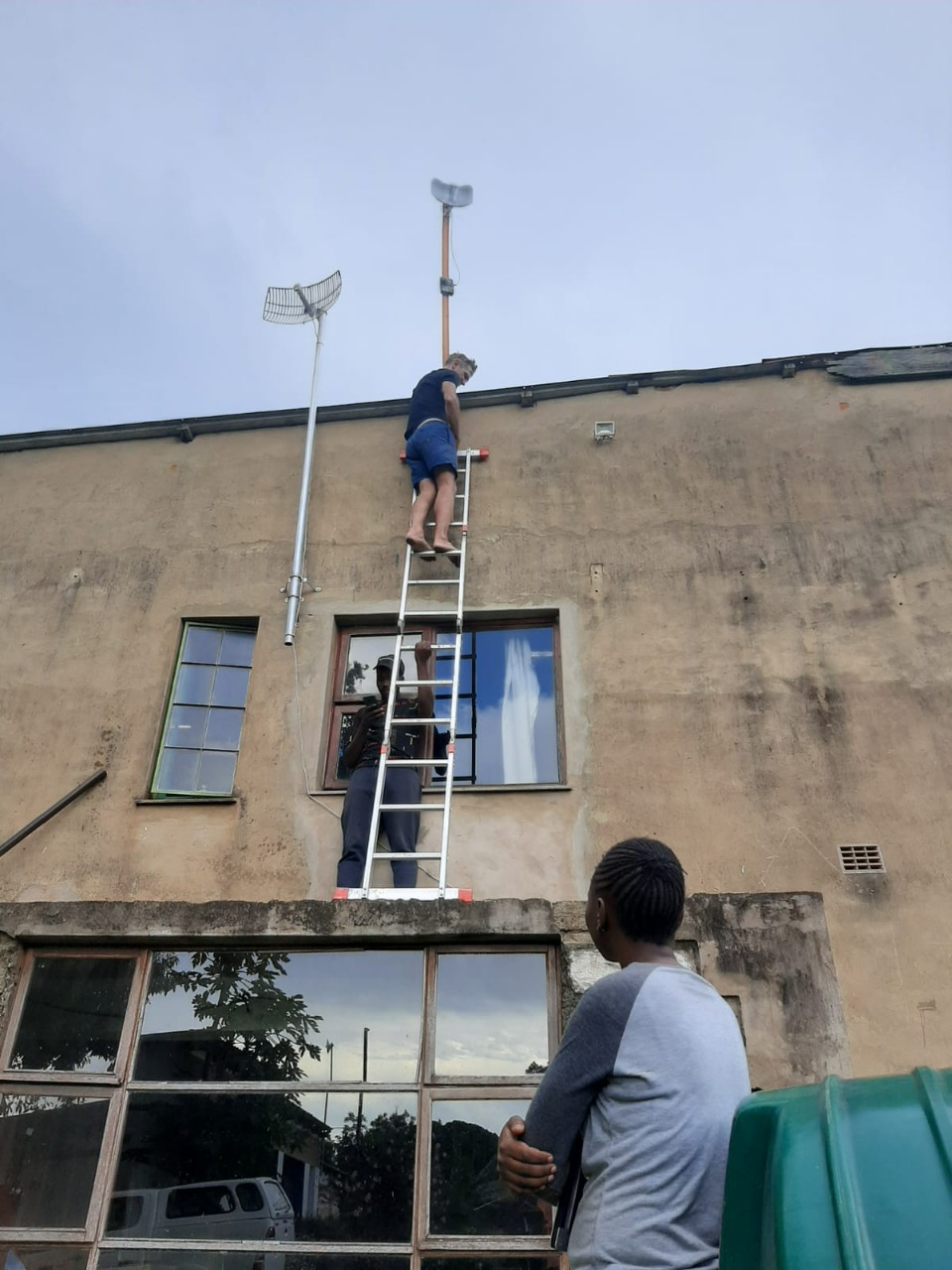Project: Mooiplaas Wi-Fi Community Network
Client: Nyara Youth Development
Service Provider: Coenraad Loubser, Wish.org.za
Introduction
The coastline north of East London is known for its stunning views and vistas. Grasslands blend seamlessly into rainforest into bushveld. The reason for these beautiful vistas is due to the hilly terrain which meanders interchangeably from 300m above sea level to 150m above sea level for about 100 kilometers until you finally reach Mthatha. Should you rather decide to visit the coastal village of Haga Haga, you will drive a dramatic descent from 300m to sea level in about 45 minutes. This descent, while beautiful on the eye, makes connectivity a nightmare for the local population who have struggled for years to get access to basic network infrastructure.

One NPO decided to take matters into their own hands.
The Plan
Robyn from Nyara Youth Development contacted Coenraad Loubser from Wish at the end of 2021 looking for a partner to help set up a local community network in Nyara Village. She had raised initial funding through an international crowd funding website and had enough funds to buy the basic hardware.
The first thing to do was to find a local fibre provider and to identify high sites with line of sight to the local villages:
A few potential providers were identified and approached. Location was just as big a factor as a willingness to help. Local service providers came to test their links but could not help. Finally a business in East London agreed to become part of the project.
Next, an intermediary high-site needed to be found:
Over 20 potential sites were identified, but after visiting all of them only 4 were potentially viable. Of these, 2 were not willing to help and 1 was an existing municipal tower that would pose additional financial and administrative obstacles, which left the network with just one potentially viable option: a farm surrounded by a lot of tall trees.
The hardware
Normally surveying from a site takes less than an hour. Three days of surveying was required to find a suitable location on the farm. Finally, point-to-point microwave links were set up from the Business in the urban center, 20 km to the farm, and from there 15 km to Nyara Village.



The result
Nyara Village now has a 50Mbps Wi-Fi connection that is available to anyone to use.
At the moment connecting to the hotspot is free, as there is only a small zone in which the hotspot is active, but there are plans to expand the hotspot area and then charge a small fee via vouchers which will make the project sustainable in the long term.
How do LEO Satellites fit into the above?
While the above project took about 3 weeks, funding and resource availability, as well as the number of sites that needed to be visited, and people who had to be negotiated with, meant that it was executed over 11 months of elapsed time. Not to mention the availability of hardware in an industry still plagued by post-Covid shortages.
If LEOS had been readily available this time period could have been significantly reduced, the level of expertise needed wouldn’t have been so high, and more of the funding could have been used to install Wi-Fi hotspots.

Summary
Pros of having standard terrestrial backbones
- Human connection & relationship building
- Early learning opportunity as everyone gets in deep and local users ask questions
- Raising awareness in the surrounding community
Pros of LEO Satellites:
- No dependency on suitable high site connections and interconnection points
- No dependency on intermediaries administering the above
- Works on any terrain
- Less hardware needed
- Less expertise required to get started
Further Reading:
Read more about Robyn and her journey here.
Also see how Internet South Africa supported Qokolweni Community Network.